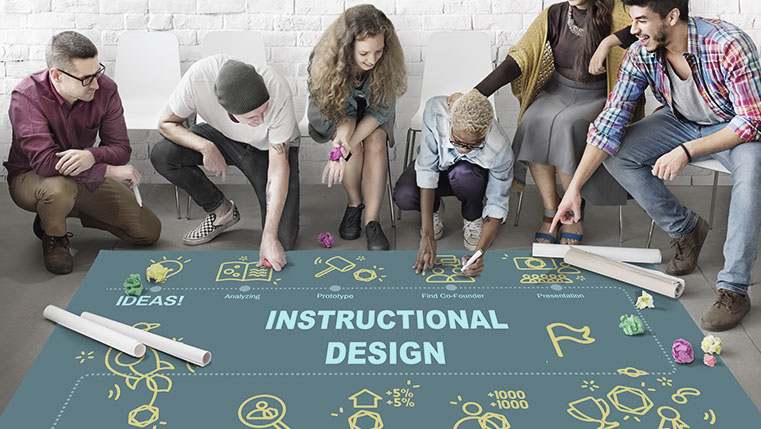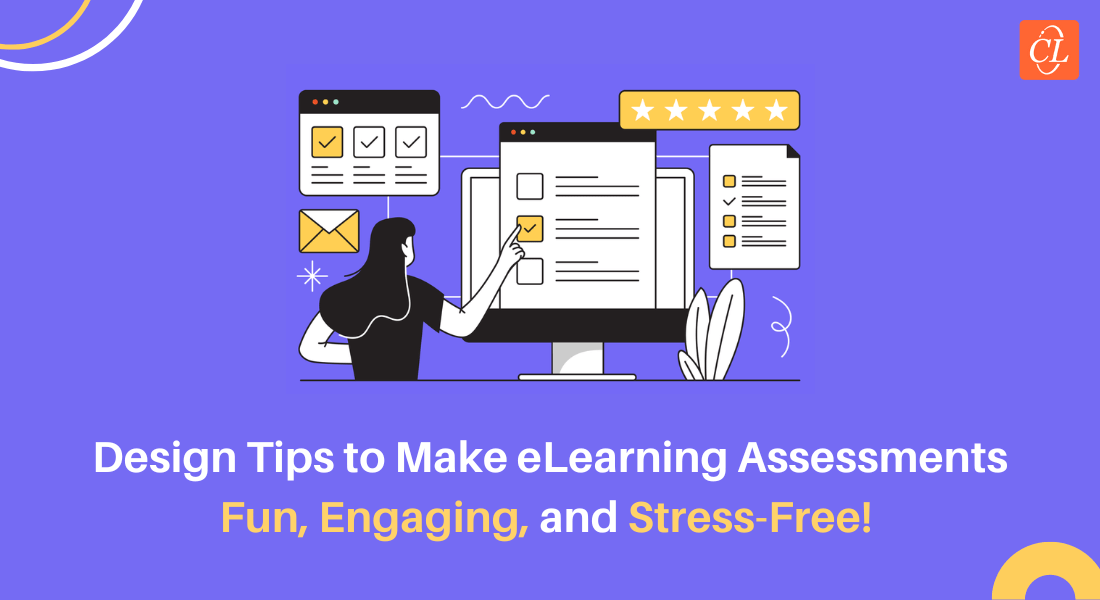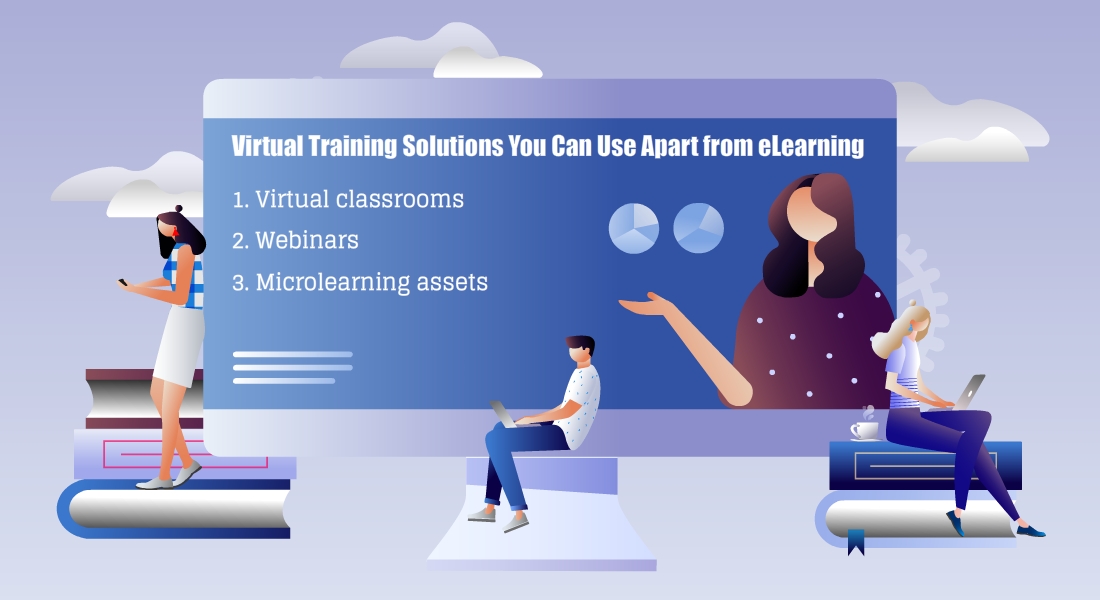4 Creative Instructional Design Strategies for Effective Online Courses
This blog post shares some creative eLearning instructional design strategies.

While designing online learning courses, instructional designers stick to the same traditional approaches and techniques. There’s nothing wrong with this and is completely normal – they work inside their comfort zone as training material designers and developers. They use these strategies because they consider them as good strategies to build the training material on. However, the problem is that many times these instructional design approaches are not optimal.
As instructional designers, you can’t simply stick to one or two traditional strategies to develop your e-learning courseware. Besides, learners today expect training that’s interesting, innovative and involving. Instead of a Next/Back navigation course, you must strive to be creative in your ID processes and approaches at all times.
Today, we will look at four instructional strategies that are unique in their own rights, and which will enable you to think creatively and go beyond your usual ID routine. Let’s look at them.
Scenario-Based eLearning:
What are scenarios and why should you care? Scenario-based e-learning is one of the ideal ways to make your training engaging. Scenarios assist learners learn at a much deeper level because they present a real-life problem, followed by relevant feedback. Instead of just reading and skimming through the slides, scenarios place learners in a particular situation – with an intent to understand – and asks them to make responsible decisions. In simple terms, scenarios turn basic information into practical application.
Why should you use scenarios? Well, because they allow learners to:
- Apply knowledge and practice skills relevant to the problem they face
- Analyze, identify issues, solve problems and formulate strategies
- Learn by completing tasks which mimic the challenges they are likely to face in the real world
Here’s an example:
Sales teams always face customer objection challenges. A sales person knows that a customer is likely to walk away from them if they don’t provide a convincing sales pitch. With the help of scenario-based e-learning, your sales team can come to terms with the reality of how customers behave and how they can better manage the sales pitch. If different scenarios can be offered with regular feedback, as to how to negotiate and close a sale, they will have a good understanding of how the real-life customer can be brought on board.
Story-Based Learning:
A traditional e-learning course probably would have used a single narrator reading multiple slides with bullet point lists. Imagine what would happen if the same content can be woven into a story? You can deliver it in a conversational style, like two characters having a coaching session. I agree that this does increase the overall word count, but I think you will agree that it’s more engaging than reading a list.
What’s story-based learning, then? It is essentially an environment where learners can easily relate with the characters or avatars and learn while the story unfurls. This not only brings about a valuable transfer of knowledge to the learner, but also leads to its usage in the work environment.
Remember, stories – like scenarios – are far more engaging when they show the character facing challenges. These challenges should mimic the kinds of issues learners will face in their real workplace. You don’t need an evil villain in your story, but you do need obstacles to overcome. Also, it’s a good practice to ensure that your media design elements reflect the subject and tone of your story.
Here’s an informative resource where you can learn more about the power of stories in e-learning.
Guided Exploration:
Guided exploration is a way of facilitating guidance to learners (instructions) through a guide (instructor) on how to perform a particular task. However, in this process it’s the learners who determine their own learning process. It is a style of learning where instructional approaches are designed to allow the learner to make decisions. In other words, the instructor defines the outcome but does not determine how it will be achieved.
A good example is of coaching. A coach helps the learner reflect on their real-world experiences, gain insights and make new generalizations that can be tested out on future tasks. Let’s take the example of a coach. What is a coach’s job? It is not just giving advices, but challenging, supporting and encouraging his pupils as they come to their own conclusions. Similarly, in e-learning, you have characters that guide your learners through the course, right from the beginning till the end. One of the added benefits of having characters is that they also serve as the narrator for your course.
For example, for a training course on medical requirements, an ideal guide would be a doctor who takes your learners through the details on what kinds of requirements are necessary.
Guided exploration can take many forms in training – demonstrating experiments in a laboratory, simulations, scenarios, case studies or team-building activities. They are most useful when you want to bring in a tutor-learner environment to your e-learning.
Here’s a really interesting blog on how to create a guided learning approach for your sales team.
Performance Support Tools to Supplement Primary e-learning:
What are performance support tools? Performance Support Tools (PSTs) provide employees with on-the-job tools that make their work a lot easier. Unlike training, these PSTs act like job aids, to support and guide employees in their jobs. PSTs allow learners to learn and work at the same time.
PSTs are a great source to supplement your ongoing primary training. Once your learners finish up the primary online training, you can supplement it by either reinforcing the same training or offer performance support through PSTs. This allows them to perform better at work without losing productive time.
So, what is the most suitable way to offer PSTs? The choice is plenty. Mobile apps, interactive PDFs, eBooks, podcasts, and videos are some of the examples of PSTs.
Mobile learning is often associated with performance support because it complements online learning in a lot of ways. Learning on devices offers just-in-time, anytime-anywhere access to learning materials that is enough on most days for your learners to get their job done.
Sometimes, as instructional designers, you need to put yourselves in the learner’s shoes and see whether the ID strategy you are using is helping learners in any way. Not only that, you must also check if your choice of strategy sits well with the content you are working with. Today’s learners get bored easily if the course lacks interactive content. You must get out of the box and think innovatively to make sure that your learners stick to the training and learn.





